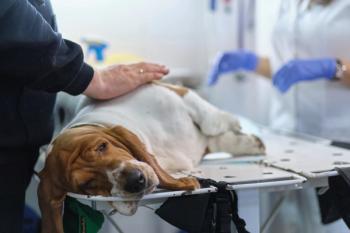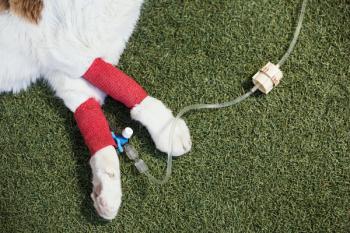
Cancer research by veterinary investigators bridges canine and human disease
Utlizing dogs can close the developmental time gap, save millions of dollars and protect canine lives.
Chand Khanna, DVM, PhD, is a veterinary oncologist who in 2004 founded the National Cancer Institute’s Comparative Oncology Program—a cross-disciplinary effort that has enlisted 19 veterinary schools to aid in the struggle to solve the riddles of cancer. The strength of this consortium, Khanna says, is a shared insight: “We can learn things that we can’t learn in human patients or in conventional mouse models by studying cancers that occur naturally in dogs.”
When it comes to studying cancer, researchers are puzzled by three broad questions: why cancers come back, why they spread, and why they resist therapy. The idea of addressing these questions by translating therapies from dogs to humans is certainly not new—bone marrow transplants originated in dogs in the 1960s—but two events in 2004 accelerated the comparative impulse.
Most important, Khanna says, the canine genome became publically available. At the same time, several biological techniques became more affordable. As a result, Khanna’s canine patients with cancer could receive “cutting edge, state-of-the-art” therapies while human research was informed by the results.
Khanna says veterinarians bring a distinct perspective to biomedical research, a fact they sometimes forget—they’re more comfortable with a diversity of biological problems, tackling everything from shipping fever in feedlots to parvovirus in dogs. They naturally ask questions first, then figure out how to answer them rather than asking only questions they already know how to answer.
“It doesn’t matter to us what the question is,” Khanna says. “We often have to learn to do things we don’t know how to do. Or we have to jury-rig things we know how to do to fit the circumstance. We’re comfortable with that.”
Today, the 19 schools in the Comparative Oncology Program are primarily investigating cancer drug therapies. Veterinary researchers work closely with pharmaceutical companies, which provide the lion’s share of funding, and with academic researchers to answer questions about new therapies faster and more efficiently. Cancer drug trials advance through three phases. Researchers must
1) demonstrate the drug is tolerable
2) show the drug makes the tumor smaller
3) demonstrate patients live longer.
This bottleneck can take decades to navigate before a drug reaches the human patient.
Plus, each phase is expensive in cost as well as time. Most expensive, Khanna explains, are trials that fail in the second or third phase. But utilizing dogs in the study can help eliminate useless drugs earlier. In a 2009 article, Khanna and other researchers advanced the idea that utilizing dogs in comparative studies to weed out faulty drugs sooner could save as much as $120 million per 100 drug candidates. Because the time between initiation of a study and a useful human drug can be up to 20 years, he says, actual savings so far are difficult to calculate.
Khanna also says he thinks comparative studies can shorten the agonizing time between pure science and clinical application: “By integrating a complete model system like the dog who is also my patient, you allow more questions to be asked—scientific questions—so you bring scientific questions closer to the clinic.”
Newsletter
From exam room tips to practice management insights, get trusted veterinary news delivered straight to your inbox—subscribe to dvm360.





